Product Manager Job Description: Roles, Responsibilities & Key Skills
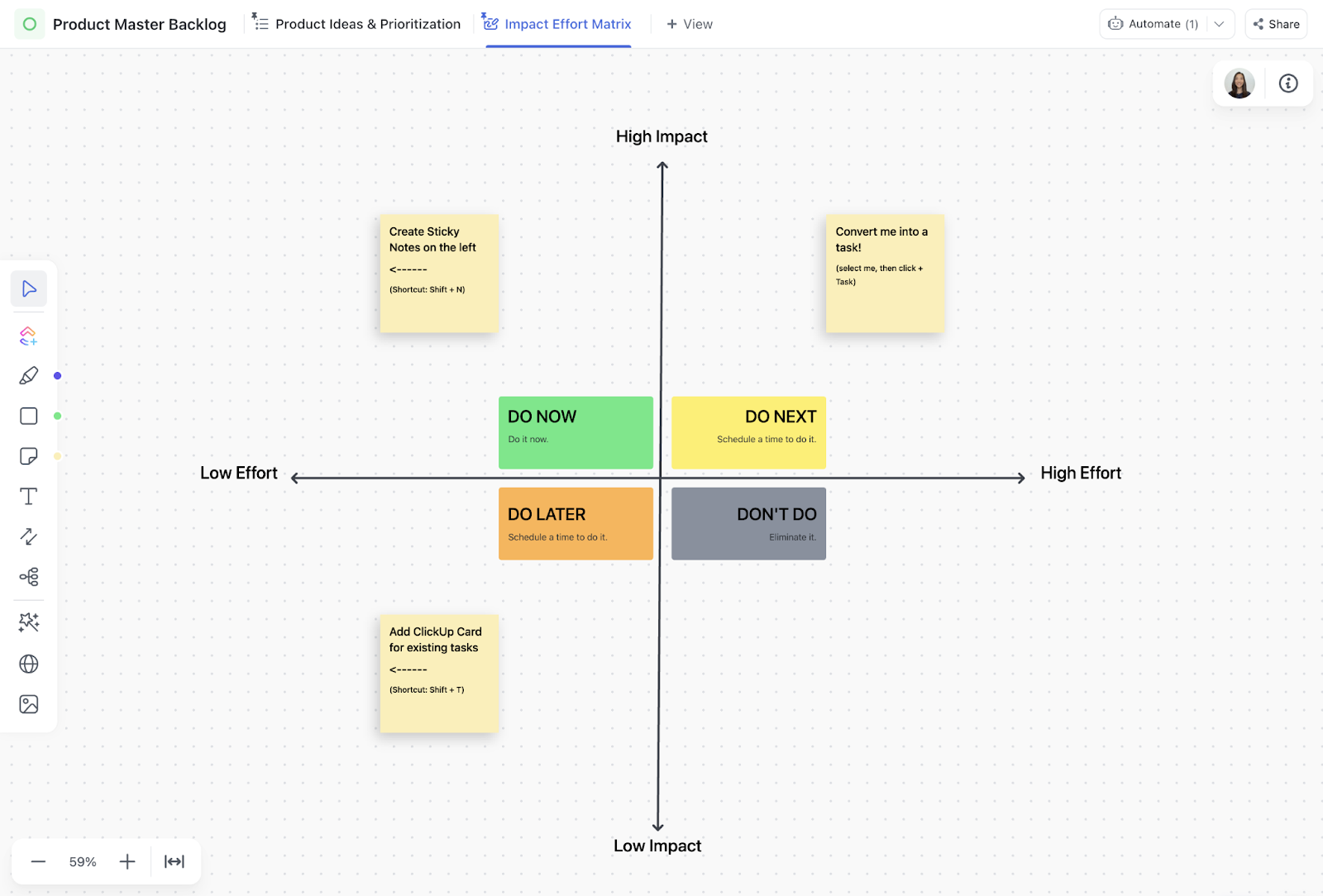
Sorry, there were no results found for “”
Sorry, there were no results found for “”
Sorry, there were no results found for “”

People think focus means saying yes to the thing you’ve got to focus on. But that’s not what it means at all. It means saying no to the hundred other good ideas.
The quote captures the product manager’s reality—focus isn’t just about priorities, it’s about filtering the noise to make daily strategic choices. 🎯
As product managers, you face this challenge daily. Prioritization, trade-offs, and tough decisions shape the role. In addition to managing a product, you drive strategy, align teams, and ensure every feature delivers value.
But what does a day in the life of a product manager look like?
From Agile product management to sprint planning and stakeholder alignment, your job is to balance vision with execution and guide the team in the right direction.
Whether you’re building products or teams, tools like ClickUp bring clarity to complexity. They help PMs stay focused and hiring managers find the right fit faster.
In this article, we’ll dive into the product manager job description, key responsibilities, essential skills, and what it takes to succeed. 📌
“What does a product manager do?” Ask ten people and you’ll get ten different answers. 🤔
Some people will say product managers focus on researching and identifying products worth building. Others might argue they oversee the entire product development cycle. Some may even limit the role to feature development or product analytics.
While each of these perspectives is accurate, they don’t fully capture the essence of a product manager. A product manager plays many roles, often combining multiple responsibilities at once.
Simply put, a product manager identifies and aligns customer needs with business goals. They define what success looks like for a product and lead the team to bring that vision to life.
Martin Eriksson describes product management as the intersection of business, technology, and user experience.
Ben Horowitz once called product managers the ‘CEOs of the product’ because they set product manager goals, motivate teams, and guide the product’s direction.
But, unlike a CEO, a product manager has no direct authority. Still, they drive outcomes through influence, strategic thinking, and leadership in product management.
👀 Did You Know? In 2023, Indeed ranked Senior Product Manager as the #5 best job!
A product manager’s roles and responsibilities vary based on the organization’s size.
In larger companies, they work alongside teams of specialists—researchers, analysts, and marketers who gather input while developers and designers handle execution. The role involves ensuring that different teams work toward a shared vision.
In smaller organizations, employees may spend less time on coordination and more time on hands-on tasks like defining product management strategies and executing plans.
No matter the organization’s size, a product manager’s role generally includes:
ClickUp for product management is the ideal tool to sharpen existing skills and learn new ones. As the everything app for product managers, ClickUp is designed to manage multiple projects. It helps you organize tasks and track progress at every product lifecycle stage.
You will have complete control over task assignments, dependencies, and automated workflows, which are vital for managing your product backlog effectively. This means product management challenges won’t slow you down.
📖 Also Read: Product Management KPIs And Metrics To Track
As a product manager, you need to constantly develop your skills to stay competitive. Whether you’re job hunting or aiming for a promotion within your company, keeping up with new technologies and agile practices can make a difference.
Below is a list of crucial hard and soft skills you should learn:
You don’t need to write code, but you should understand how products are built. Knowing basic development concepts helps you communicate with engineers, make informed decisions, and create realistic timelines. Without technical fluency, PMs risk slowing projects or misaligning expectations.
If you’re a PM, ask your engineering manager which skills would improve collaboration. If you’re new to the role, take an introductory coding course tailored to your industry.
Clear specs turn concepts into reality. They guide engineers and designers, prevent delays, and ensure alignment.
Clear documentation keeps teams aligned and reduces unnecessary revisions. Reviewing past project briefs or studying examples from experienced PMs strengthens this skill.
Product managers must analyze data and turn it into clear, actionable insights. You must analyze data and convert it into actionable insights for your team.
Considering alternative approaches sharpens critical thinking. Similarly, reflection and active listening refine judgment and improve future choices.
Leading a cross-functional team requires more than project oversight. Product managers must inspire teams, drive collaboration, and advance initiatives.
Strong leadership builds trust and motivates different departments to work toward shared objectives. You must also take the initiative to make decisions, resolve issues, and guide your product through development and launch.
Product managers constantly balance multiple tasks and priorities. Time management skills are essential to keep everything moving smoothly.
Tools like ClickUp help organize priorities, manage deadlines, and streamline execution. As you gain experience, you’ll determine what time management strategies work best.
The best product managers balance customer needs, business goals, and technical feasibility. They translate ideas into well-defined products, working closely with engineers, designers, and marketers.
To find a well-rounded product manager, start by crafting a clear job description. The job description template below will help you build a comprehensive listing tailored to your company’s needs.
📌 Product manager job description example
In your job description, first highlight what makes your company stand out. Are you an industry leader, a startup on the rise, or an enterprise?
Mention your workplace culture, work-life balance, or unique growth opportunities. These points help attract top talent.
If you’re hiring, use these example responsibilities to structure your job listing:
This section details your company’s benefits, salary, and working conditions. Mention opportunities for advancement, bonuses, and other perks. Use salary tools to ensure your numbers align with industry standards.
Highlight what sets your company apart—this is where you sell the role.
Create a list of skills that will help the candidate succeed in the role. Start with the most essential attributes. For example:
A bachelor’s degree in business, industrial engineering, or a related field is necessary. An MBA or relevant certifications, such as Certified Product Manager (CPM), will set candidates apart. Experience with Agile/Scrum and product management tools is also valuable.
End the job description by inviting candidates to apply. Encourage them to submit their resumes and cover letters.
💡 Pro Tip: Use ClickUp Docs to co-create JDs, collect team feedback with comments, and attach them to your hiring workflow. ClickUp Forms helps collect applications or internal suggestions in one place.
ClickUp provides hiring managers with powerful tools to manage tasks, meet deadlines, and easily stay on top of recruitment opportunities.
For example, ClickUp Brain is the world’s first neural network that connects tasks, documents, people, and your company’s knowledge with AI. It acts as a knowledge manager, product manager, and writer tailored for your work style. You can use it to generate job descriptions directly through our chat interface.
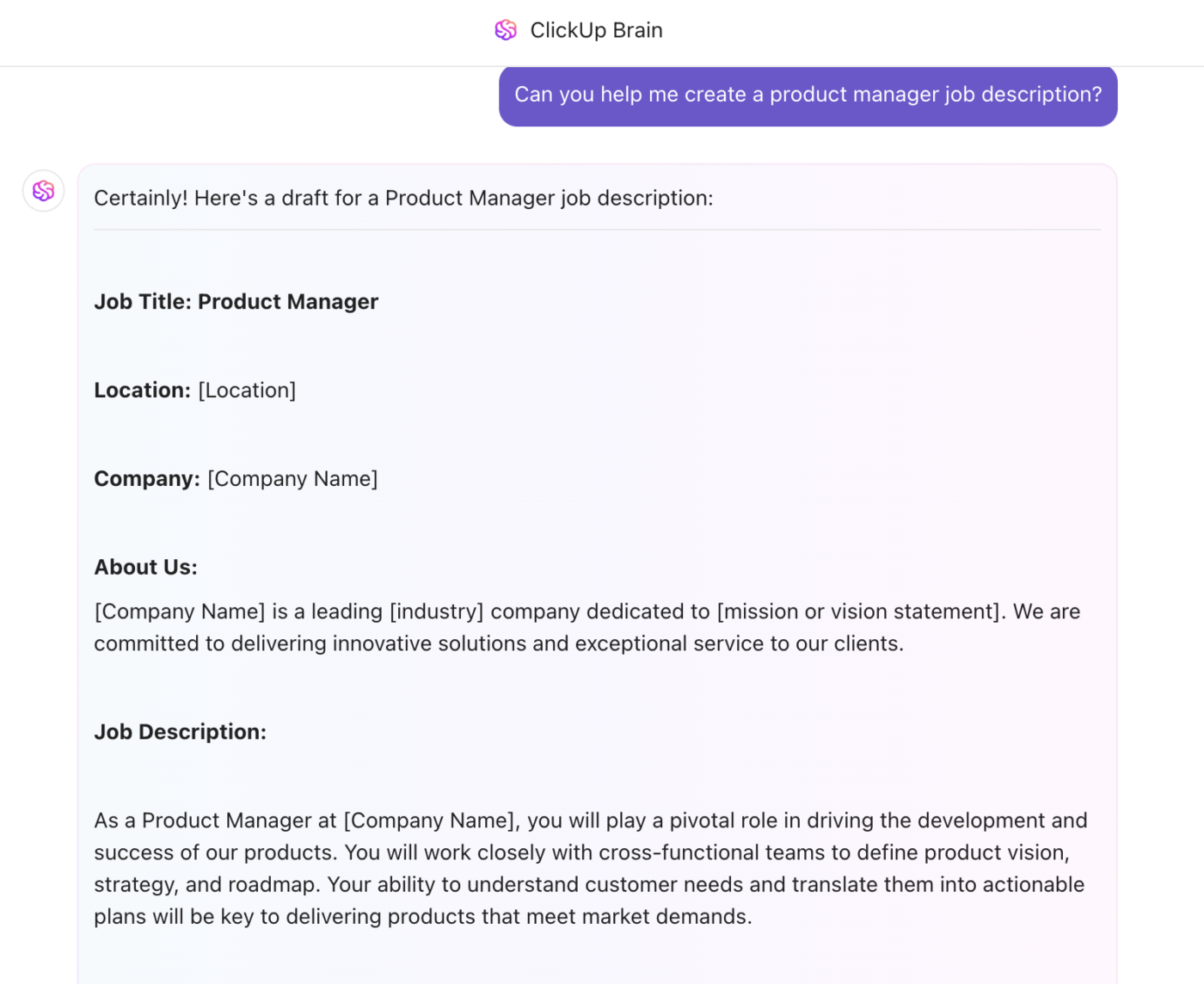
With the ClickUp Brain, you can articulate the key responsibilities, qualifications, and expectations for the product manager role. For example, with the slash command ‘/AI,’ you can access three essential AI writing functions:
This functionality simplifies the process of writing, editing, and refining job descriptions, ensuring that they resonate with the right candidates.

Additionally, when you combine ClickUp Brain with ClickUp Docs, you can create customized applications, add specific notes to job descriptions, and collaborate seamlessly with mentors or team members—all while keeping everything organized.
ClickUp Docs also helps you craft a product manager resume, polish a cover letter, and prepare other job application materials with its built-in AI Writer for Work by ClickUp Brain. You can also create detailed documentation for product development, including outlining the product vision, strategy, and goals.
Embed rich media, link related tasks, and tag team members to ensure everyone stays updated with the latest information.
Here’s how you can use ClickUp Brain to simplify your job description writing:
This way, you can make job description creation easier than ever and optimize your recruitment process today.
📖 Also Read: Job Search Tips and Strategies That Actually Work
To excel as a product manager, candidates need a combination of education, hands-on experience, and industry-recognized certifications. Here are the must-have qualifications for most product management roles:
While certifications are not always required, they can help set you apart from other candidates and show your commitment to professional development.
Here are a few certifications that are valuable for product managers:
The Certified Product Marketing Manager certification, offered by AIPMM, is designed to help you gain in-depth knowledge of product marketing functions. It provides product managers with the tools and strategies to drive a product’s success in the market.
This certification focuses on the key aspects of product marketing and helps professionals bridge the gap between product development and market performance.
*Please check the institute’s website for the latest pricing.
The Agile Certified Product Manager Product Owner certification introduces product managers to the strategic and tactical aspects of Agile product management. It helps professionals learn to implement Agile principles effectively, even in real-world scenarios.
With this credential, you can confidently tackle setbacks and navigate project challenges, making it an excellent addition for those already experienced in product management.
*Please check the institute’s website for the latest pricing.
Created by award-winning technical product manager Dhaval Bhatt, the Technical Product Manager Certification is an intensive program for those seeking to enhance their technical product management skills.
This course provides hands-on knowledge of the technical aspects of product management, preparing you for common technical interview questions and giving you the tools to succeed in a technical PM role.
*Please check the institute’s website for the latest pricing.
Not all PMs come from tech 🎯
Many product managers didn’t start in engineering. Successful PMs have come from QA, marketing, support, and education.
Key traits:
📮ClickUp Insight: 21% of respondents want to leverage AI to excel professionally by applying it to meetings, emails, and projects. While most email apps and project management platforms have AI integrated as a feature, it may not be seamless enough to unify workflows across tools.
But we cracked the code at ClickUp! With ClickUp’s AI-powered meeting management features, you can easily create agenda items, capture notes from meetings, create and assign tasks from meeting notes, transcribe recordings, and more, with our AI notetaker and ClickUp Brain. Save up to 8 meeting hours per week, just like our clients at Stanley Security!
A career as a product manager can be both rewarding and lucrative. Product managers play a critical role in the development and success of a product, leading cross-functional teams, defining product strategies, and keeping alignment with business goals.
As a result, their compensation reflects the level of responsibility and expertise required.
The salary of a product manager can vary based on factors like location, experience, and industry. According to public sources on the internet, on average here are the pay packages of product managers across levels:
Beyond base salaries, product managers often receive bonuses, stock options, and other perks. In tech companies or startups, stock options can significantly boost total compensation.
Product managers typically start as Junior Product Managers and progress to Senior or Lead Product Manager roles. Many PMs later transition into leadership roles like Head of Product or move laterally into growth or operations. With experience, they may transition into Director or VP positions, overseeing company-wide product strategies.
Industry, location, company size, and relevant certifications significantly shape career growth and salary. For example, tech hubs and larger companies tend to offer higher salaries and more opportunities for advancement.
Skilled product managers will drive success as companies launch new products and focus on innovation.
Getting a product management certificate is one thing, but applying those skills effectively in your work is what truly matters. That’s where ClickUp can help!
ClickUp allows you to bring your product management expertise to life. As you know, taking a product from development to launch involves many tasks. You must also communicate with clients and stakeholders while managing expectations and priorities.
Product management has made way easier after implementing Clickup.Tasks can be monitored and display of dashboard is a way interactive.
With ClickUp Tasks, you can create clear tasks, assign them to team members, and set deadlines. You can set task priorities to ensure clarity on responsibilities and timelines.
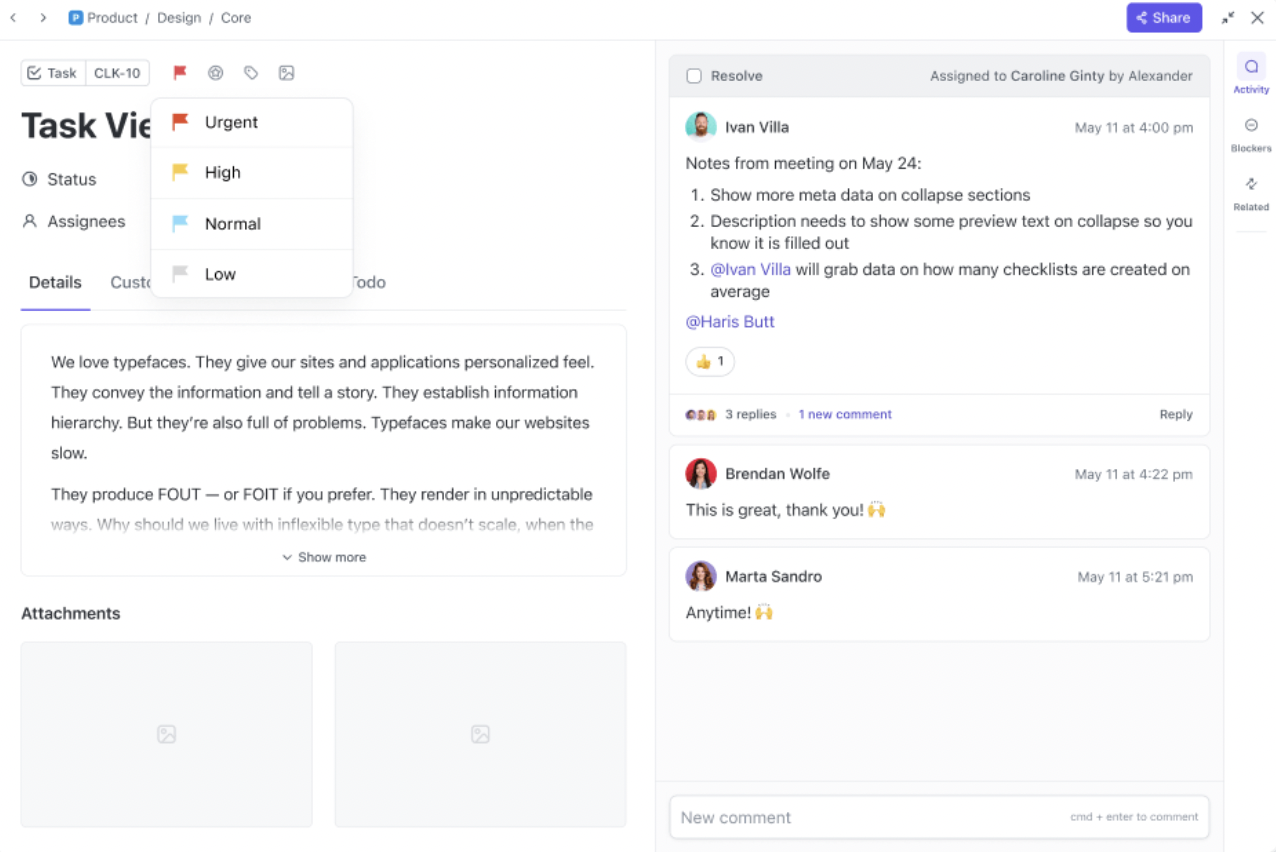
The customizable task statuses and workflows let you adjust your project management processes based on your team’s needs, whether you’re testing a feature, tracking issues, or working with specific methodologies like Scrum or Agile.
With ClickUp Time Tracking, you can monitor the time tasks take to complete, identify inefficiencies, and make adjustments as needed.
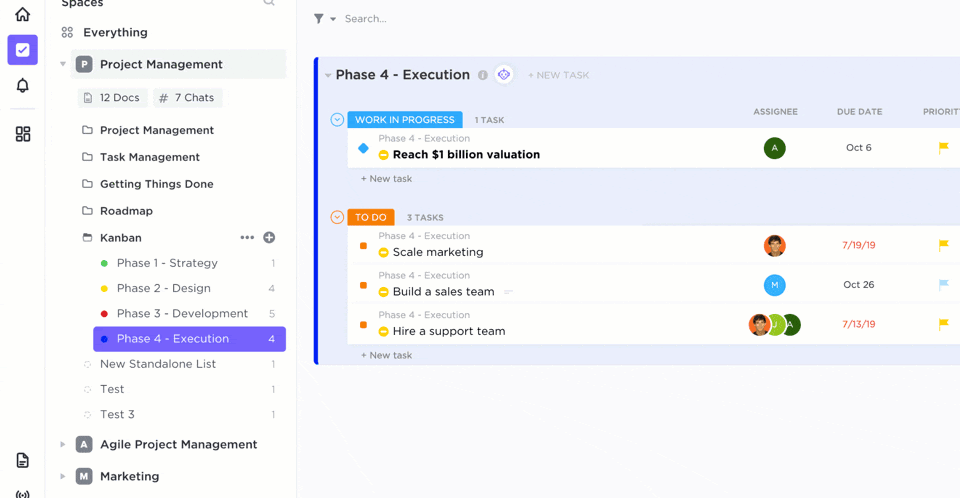
ClickUp also helps you track significant milestones. They mark the completion of major tasks, like releasing a new feature.
In the ClickUp Gantt View, these milestones are visually highlighted as yellow diamonds, making them easy to identify on the timeline. The Gantt view lets you monitor your project’s progress over time, whether over days, weeks, or months.

As a product manager, you can easily use the ClickUp Kanban board to organize and track your tasks. Customize columns, drag tasks through phases, and highlight key tasks with color-coded labels and priority tags. The board lets you multi-select tasks, update them in bulk, and assign them to team members, all in one place.
With subgroups (swimlanes), you can visually categorize tasks by criteria like assignee or priority, making it easier to manage complex projects and keep the team aligned.
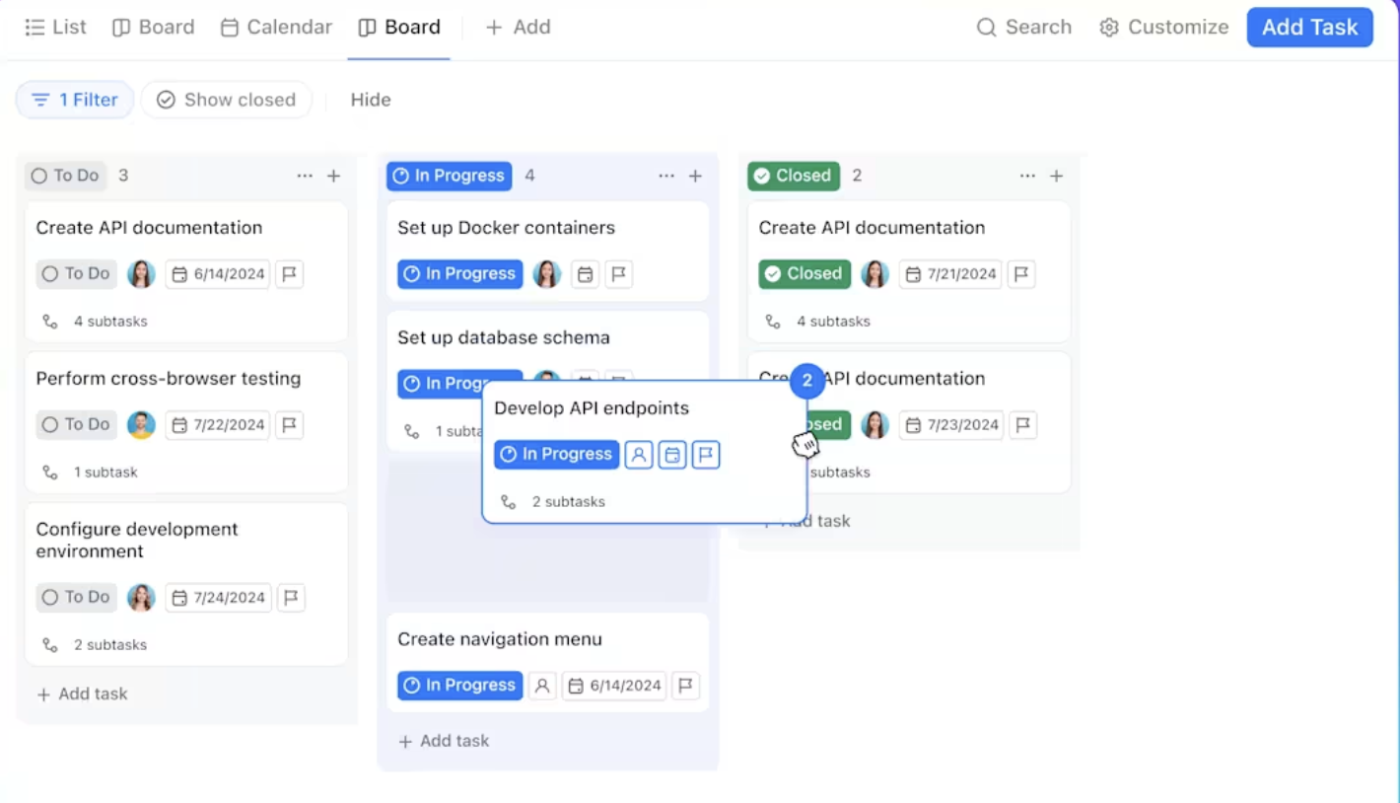
On the other hand, ClickUp Dashboards allow you to create a product management dashboard that tracks and organizes key data, from customer feedback to product usage insights.
Custom reports help you make informed decisions and prioritize your work strategically.
🤝 Product management Is a team sport
As a PM, you’re not just building a product—you’re aligning engineering, design, QA, and marketing teams around a shared vision.
ClickUp helps you:

ClickUp makes it easier for product managers to think strategically. It lets them view the bigger picture and focus on key priorities. To support this, ClickUp offers a library of product management templates.
For instance, you can use the ClickUp Product Roadmap Template to create and execute strategic plans efficiently. With ClickUp’s product roadmap view, you can visualize your product’s long-term strategy and align your team around shared goals. This framework also ensures your stakeholders are aligned with your objectives.
The template includes custom statuses, fields, and views, giving you the flexibility to manage and visualize your product roadmap in the way that suits you best.
Plus, ClickUp integrates seamlessly with over 1000+ tools, including Slack and Microsoft Teams. You can bring all your existing tools into one platform, making your workflow even more efficient.
Shreyas Doshi, a former front-line product manager and manager of product managers with experience at Stripe, Google, Twitter, and Yahoo, shares his insights on becoming a product manager.
Be clear on what you want from your next job before you’ve left your current job. I’m a firm believer that as product managers, we should think of our own career as a product that we are managing. We should apply the same level of analytical rigor to decisions about our careers and these kinds of changes from one company to another.
🧰 Tool Stack Tip: Product managers often manage multiple platforms, such as Trello, Notion, Slack, and Excel. ClickUp unifies them with native integrations.
Product management is a dynamic field that allows you to take on many roles and collaborate with talented people. Successful product managers combine hard and soft skills, such as user research, road mapping, communication, and time management.
ClickUp helps you manage your tasks, create roadmaps, automate workflows, and track progress in one place. You can streamline everything from goal-setting to stakeholder updates—all in a single workspace.
Ready to take the next step in your product management career? Sign up for ClickUp today and get started! 🚀
© 2025 ClickUp